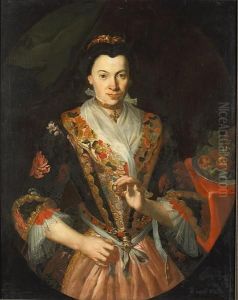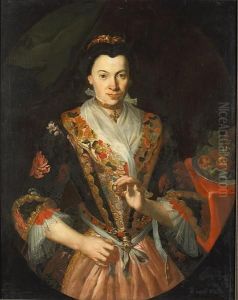Rosina Christiana Ludovica Matthieu Lisiewska Paintings
Rosina Christiana Ludovica Matthieu Lisiewska, born in 1713, was a distinguished artist of the 18th century, whose work remains relatively obscure in the broader narrative of art history. Despite the scarcity of extensive records on her life, what is known reflects the challenges and achievements of a female artist in a predominantly male-dominated field during her time. Rosina hailed from the Lisiewska family, a lineage with notable artistic contributions, which provided her with an environment rich in artistic education and exposure from a young age.
Her career was marked by her expertise in portrait painting, a genre through which she managed to carve out a space for herself in the competitive art world of the 18th century. Working primarily in oils, Rosina's portraits are characterized by their detailed expression, capturing not just the physical likeness but also the essence of her subjects. This ability to portray character and emotion on canvas was a testament to her skill and sensitivity as an artist.
Despite the constraints placed upon women in the arts during her lifetime, Rosina's work was recognized and appreciated by a select clientele who valued the unique perspective she brought to her portraits. However, like many women artists of her era, the recognition of her contributions has been limited, with much of her work either attributed to her male relatives or lost to history.
Rosina Christiana Ludovica Matthieu Lisiewska's death in 1783 marked the end of a career that, while not widely celebrated in the annals of art history, remains a fascinating study of talent, perseverance, and the ability to achieve recognition against the odds. Her legacy, though not as prominent as some of her contemporaries, offers valuable insights into the role of women in the arts during the 18th century and serves as an inspiration for future generations of female artists.

